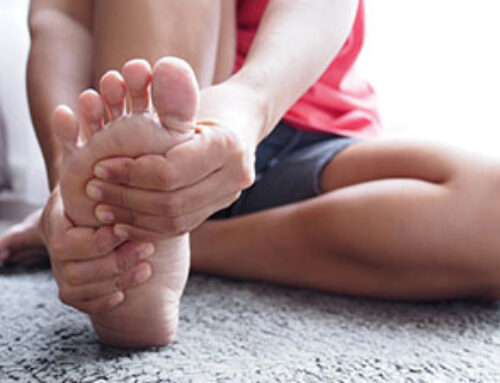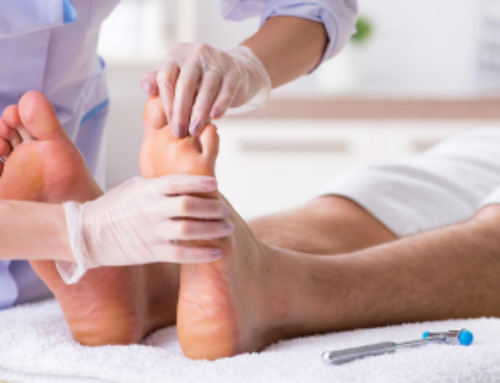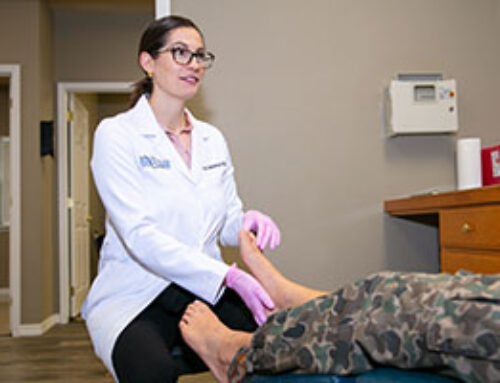The foot is made up of 26 bones, 30 joints, and more than 100 muscles, tendons, and ligaments. These structures work together to provide support and allow you to move. However, the complexity of the foot leaves it susceptible to stresses and injuries that can cause pain and prevent you from participating in activities you enjoy.
Identifying the source of foot pain is the first step to effective treatment. In general, pain starts in one of three areas: the top of the foot, the bottom of the foot, or the side of the foot.
Causes of pain in the top of the foot
While physical activity often causes pain in the top of your foot, wearing improperly fitting shoes can also result in discomfort. Common conditions that affect the top of the foot include bunions, foot extensor tendonitis, and anterior ankle impingement.
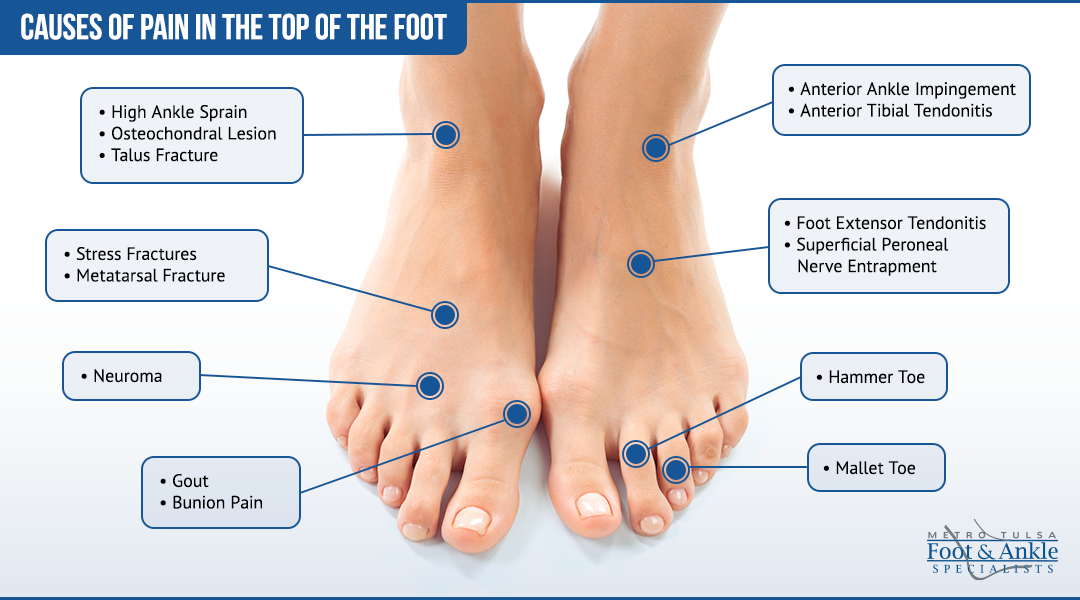
Bunions
A bunion is a painful, bulging bump that forms on your big toe, near the base of the joint. Bunions tend to develop slowly as pressure on the big toe joint forces it to lean toward the smaller toes. Over time, the normal position of the bones and tissues changes and alters the mechanics of the foot.
Most people who develop bunions have a family history of the condition, but they can also develop as a result of arthritis. Wearing tight, narrow shoes can make bunions worse. If you experience swelling, redness, or soreness around the joint of your big toe, you may have a bunion.
Foot extensor tendonitis
Pain at the top of your foot or front of your ankle may be a sign of extensor tendinitis, also called extensor tendinopathy. Tendinitis—inflammation or irritation of the tendons—can also cause stiffness and swelling.
Extensor tendinitis is a condition that affects the tendons that help you lift your toes and ankle when you walk. Overuse and repetitive motions can cause the tendons to become painful and swollen. People who are on their feet for work or play sports like soccer have an increased risk of developing this condition.
Anterior ankle impingement
With anterior ankle impingement, you may experience pain during exercise or after sitting for a long time. The condition occurs when swollen tissue around the ankle becomes caught between the bones of the lower part of the leg and the upper part of the foot.
The most common symptom of anterior ankle impingement is pain at the front of your ankle that gets worse when you walk, run, climb stairs, or squat down.
Causes of pain in the bottom of the foot
Pain in the bottom of the foot is a condition that often affects people who exercise. While plantar fasciitis is the most common cause of bottom-of-the-foot pain, other causes include fat pad atrophy and heel spurs.
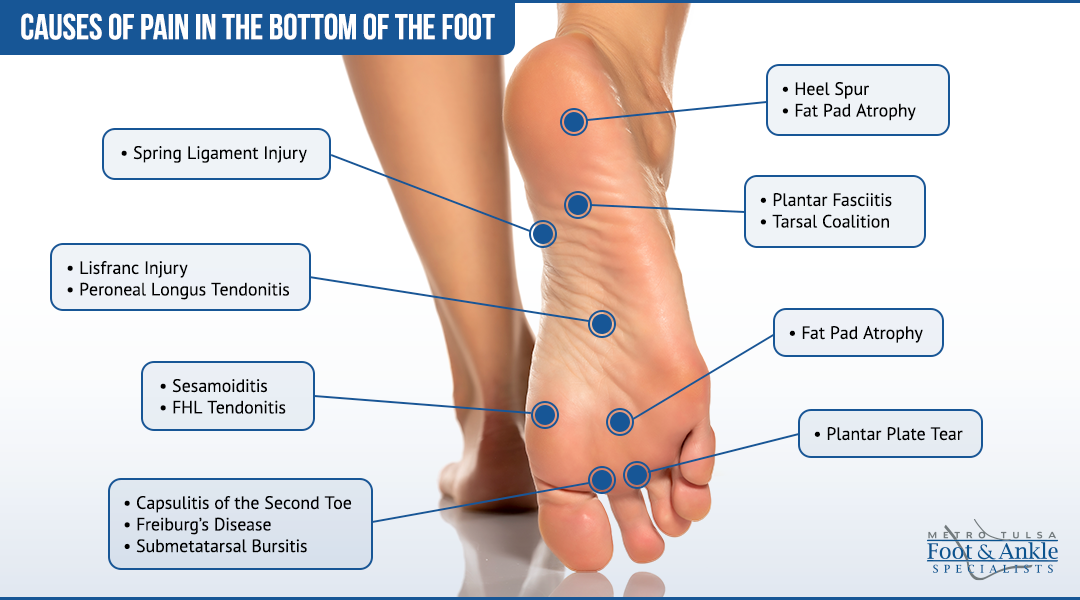
Plantar fasciitis
The plantar fascia is a thick band of tissue that runs along the bottom of your foot, from the back of your heel to the ball. When the tissue becomes inflamed or swollen, the condition is called plantar fasciitis.
Symptoms of plantar fasciitis include a stinging pain in the arch of your foot or heel, along with a tight Achilles tendon. The pain may be worse when you first get out of bed or after you sit for a long time. Extended periods of standing can also trigger pain. Fortunately, it usually goes away once you take weight off the foot.
Fat pad atrophy
Pain in the middle of your heel when you stand, walk, or run may be a sign of fat pad atrophy, also known as heel fat pad syndrome. Being able to feel the bones when you press your fingers into the middle of your heel is another sign of the condition.
Your heel pad is made up of fatty tissues and muscles that cushion the bottom of your foot when you move. If the tissue shrinks or becomes less elastic, it can result in heel pain as your bodyweight shifts onto the bones with little protection. Over time, callouses may appear on the ball of your foot.
Heel spurs
Heel spurs are abnormal growths that develop between your heel bone and arch when your body tries to repair a problem by building extra bone. The development of bone tissue is your body’s natural response to stress and strain placed on the tissues in your foot.
Symptoms include pain, inflammation, and swelling at the front of your heel. You may not realize you have a heel spur until you feel pain in the bottom of your foot.
Causes of pain in the side of the foot
Lateral foot pain that runs along the outside of the foot or ankle can make it difficult to stand, walk, and exercise. Common conditions that affect the side of the foot include midfoot arthritis, hallux rigidus, and FHL tendonitis.
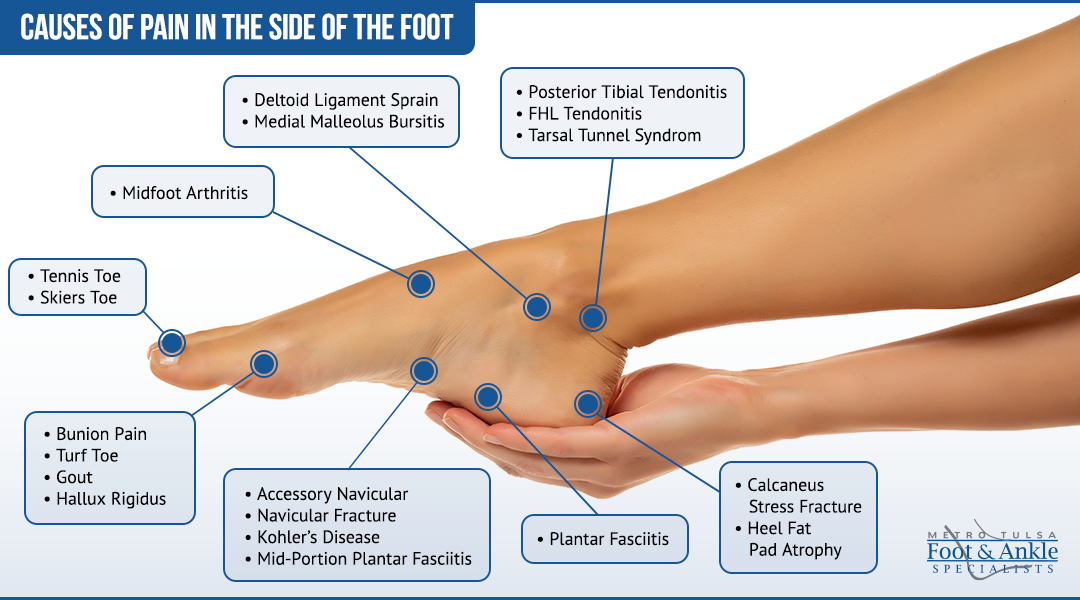
Midfoot arthritis
The middle of the foot is made up of many small bones that are aligned to help you walk and adjust to different types of terrain. The cartilage that links the bones together helps smooth the motion of the foot as you move.
Loss of cartilage can cause pain and swelling that is characteristic of midfoot arthritis. You may experience discomfort in the middle of your foot when you take your first few steps after a long period of sitting or lying down. Midfoot arthritis is usually the result of gradual wear and tear of the bones and cartilage over time.
Hallux rigidus
Pain, stiffness, or swelling in or around your big toe are common symptoms of hallux rigidus, a type of arthritis. Hallux means “big toe,” while rigidus means “rigid,” and indicates that the big toe can no longer move.
The condition can cause trouble because we use our big toes to stand, walk, climb stairs, and maintain our balance. Hallux rigidus is a progressive condition. In its earlier stage, when motion of the big toe is limited, the condition is called hallux limitus.
FHL tendonitis
The flexor hallucis longus (FHL) tendon passes along the inside of the ankle and connects the calf to the big toe. In addition to helping you flex your big toes, it allows you to stand on the tips of your toes. Overuse of the tendon can result in inflammation, a rare condition called FHL tendonitis.
Symptoms include pain and swelling from the back of the ankle to the base of the big toe. The condition is more common in runners and dancers who perform repetitive movements.
Find relief from foot pain
If you experience pain in any part of your foot, the board-certified professionals at Metro Tulsa Foot & Ankle Specialists can provide a diagnosis and get you on the road to recovery. Sometimes the solution is as simple as finding properly fitting shoes that offer good support. In other instances, pain may be a sign of an undiagnosed medical condition.
Schedule an appointment today at one of our five convenient locations.
The information, text, graphics, images, and other material contained on this website are for informational purposes only. No material on this site is intended to be a substitute for professional medical advice, diagnosis, or treatment. Always seek the advice of your physician or other qualified health care provider with any questions you have regarding a medical condition or treatment and before undertaking a new health care regimen, and never disregard professional medical advice or delay in seeking it because of something you read on this website.
Subscribe to stay up-to-date on news and tips from us.



